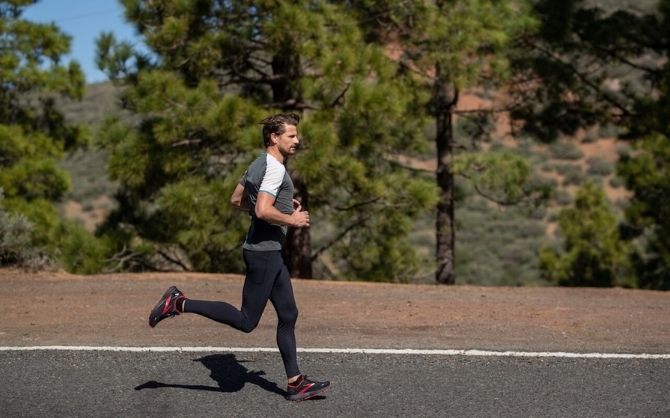How to find the right running cadence for you

The sport of running is chock-full of specific metrics that help you set and achieve goals. When it comes to tracking progress and designing workout schedules, one term you might encounter is "running cadence." Put simply, running cadence describes the number of steps you take per minute. So why does it matter? What role should your cadence have in your overall training routine?
Defining the ideal cadence
No discussion on cadence would be complete without mentioning the work of legendary running coach, Jack Daniels, Ph.D. After analysing the cadence — or stride rate — of a variety of runners, Daniels found elite runners tended to take at least 180 steps per minute (spm). Conversely, Daniels noticed new runners usually have a much lower cadence.
The conclusion of all this research was that a cadence of about 180 spm is the optimum rate all runners should aspire to achieve. Over time, thanks in part to Daniels' notoriety, a cadence of 180 spm has become a sort of golden number. Many training regimens are built around this "ideal cadence."
More recent research, however, strongly suggests that 180 spm should be treated more like a general guideline than a hard and fast rule. In one study of elite runners conducted during a 100K road race, cadence had no connection with where the runners placed. In fact, the top five finishers had a range of 155 to 203 steps per minute.
Even highly trained, impressive runners might use a cadence well below what was once considered the standard. While 180 spm might seem like the number to beat, each runner has a unique cadence based on a host of factors.
What determines a runner's cadence?
Rather than striving to reach and maintain a cadence of 180 spm, then, runners should try to find the cadence that works for them. For example, a taller runner with longer legs is naturally going to have a slower running cadence since they cover more ground with each step.

Your strength will also come into play here since running is basically the act of throwing yourself forward over and over again. (Sounds glamorous, huh?) The stronger your legs are, the farther you could feasibly go with each step and the slower your cadence will be. Identifying your ideal running cadence is about finding the rhythm at which your body — in all its individualized glory — is most efficient.
That efficiency can also be easier on your body. Recent research has found runners who take shorter steps experience less force on their joints than they might with a slower cadence. It's important to note, though, the cadences used for this research were either self-selected or determined as a percentage of the runners' natural baseline. In either case, these results were achieved by letting the runners move at a cadence that was natural to them.
Find your rhythm
So, how do you find what cadence works for you? The first step (pun intended) is to determine your baseline. Simply run as you normally would for three minutes and count how many steps you took in that time. A pedometer or pedometer app is handy for this task. Divide that total number by three to produce a good average of your baseline cadence.
As you grow as a runner, work to gradually increase your cadence, paying attention to how you feel throughout the process. A safe principle is to practice a specific cadence until you can comfortably run a 5K at that pace. Then, increase your rate by no more than 5% and repeat. If you start to notice a decline in your form, back off on your cadence slightly.
Also, don't worry about counting your steps as you run or constantly checking your phone to see what your average spm is. We have tricks. Of these, music is perhaps the most accessible and widely used (and the most fun). Research studies on cadence commonly employ a metronome to help athletes maintain a steady pace. The military also uses a similar technique by having soldiers sing while they run. I don't know, but I've been told that's not just for fun. Those songs set a specific cadence during training, which is pretty clever. It's also something you can do fairly easily.
There are numerous apps, websites, and services that can provide music that fits a certain beat per minute or even tells you the tempos of your favorite playlist. All you need to do is select a bpm that is half your target cadence so each step lands on a beat, and start grooving.

Other considerations
While running cadence is an important and useful metric, it certainly isn't the end-all-be-all of measurements. For example, if you're specifically working on running faster, speed is logically going to take precedence. Other things like rate of perceived exertion (RPE) and heart rate are also useful in tracking your progress as an athlete.
Running cadence is an important tool that can help you run efficiently and safely. To use it most effectively, though, make sure to find the spm at which you feel your best and keep in mind that it really only provides a glimpse into your overall running awesomeness. Rather than getting bogged down by metrics, enjoy your runs and have a good workout.
Our writer's advice is intended for informational or general educational purposes only. We always encourage you to speak with your physician or healthcare provider before making any adjustments to your running, nutrition, or fitness routines.

